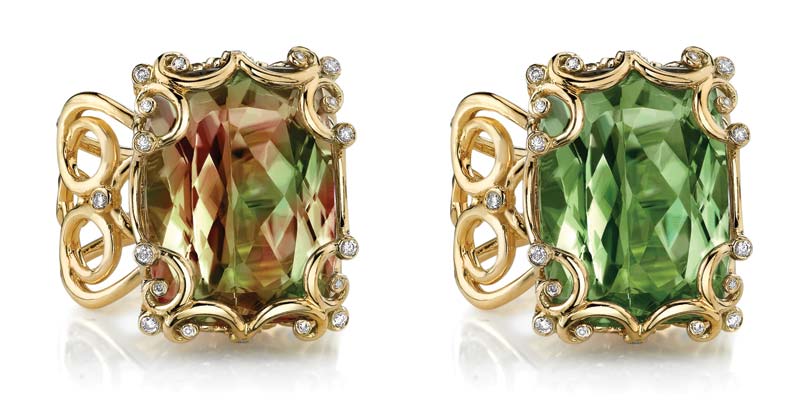By Diana Jarrett

Coloured gems are gaining traction in haute couture goods, freeing designers to be more adventurous in their stone choices, particularly with high-ticket items. Some of these decisions reflect retailers’ push for better margins after diamond and gold prices skyrocketed. But over time, selling colour has become easier, as consumers are savvier about the inherent value of these bright baubles.
Now colour-change stones are earning top billing, too. They’ve always been cozy with mineral collectors, but jewellery fans are also flaunting them. Gemstones with unusual optical effects are collectively referred to as ‘phenomenal’ gems. They can exhibit cat’s eye, play of colour, or asterism, with its mesmerizing star effect. But the optical effect darlings of today’s designs are those that completely change colour when exposed to natural daylight, incandescent lighting, or fluorescence. The most recognized colour-change gemstone is the pricey alexandrite, a rare variety of chrysoberyl. Other less rare, but highly valued, colour-change stones include fancy sapphire, garnet, spinel, tourmaline, and the gem-quality diaspore known as zultanite.
What’s going on here?
The mechanism behind this mysterious transformation centres on how gemstones absorb light in different environments. “A colour-change gem like alexandrite has two transmission windows,” explains Zak Adourian, owner and research and development director of Qouture, a manufacturer of gemmological instruments based in Los Angeles.
“Under incandescent light, which is rich in red, it reflects or transmits pink. Under fluorescent light, which is rich in green-blue, it reflects green,” Adourian says. “Depending on the gem, LED lighting behaves like mixed lighting. In pink/green gems, the colours blend and the stone appears olive. More research needs to be done to determine how LED lighting affects gems.”
More of these lively stones are penetrating the market, helping retailers and consumers learn to appreciate their traits. Even the pros are sometimes awed. “The most surprising phenomenon I encounter in colour-change stones is not their colours, but the resulting dispersion,” Adourian recalls. (Dispersion, also referred to as fire, occurs when the light that enters a stone splits into all the colours of the rainbow.) “I exposed a 10-carat rectangular alexandrite—which is known to have low dispersion—to direct LED lighting and observed mesmerizing purple, pink, and fuchsia flashes dance in the gem. It was beautiful.”





